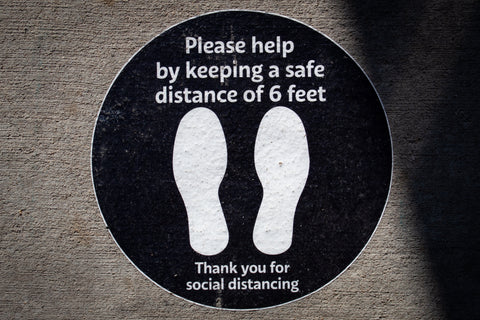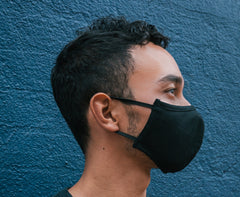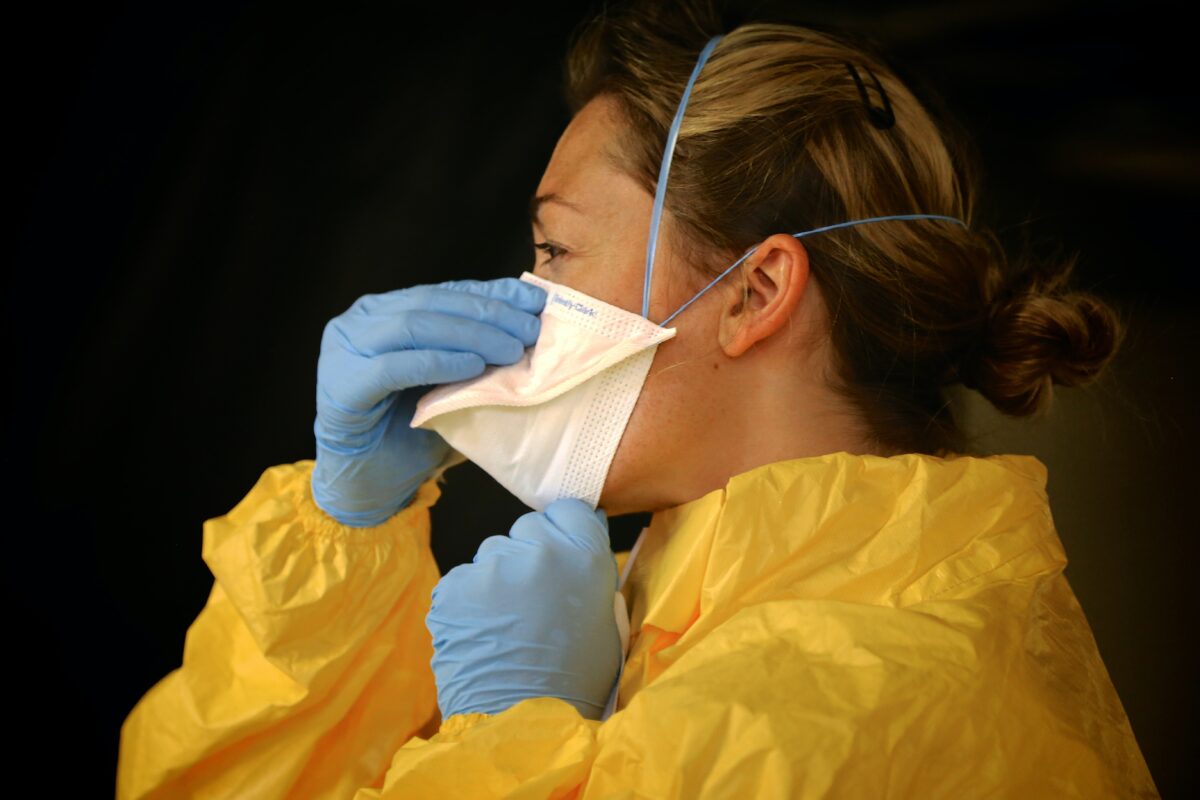Uncategorized
What PPE Is Required For Droplet Precautions?
Prior to the COVID-19 outbreak, healthcare workers were the primary people in society tasked with understanding how disease spreads.
Now, it’s up to each of us to get a better understanding of infection control best practices.

It is important for the general public to understand how face masks work, and why airborne precautions are needed to reduce your risk of contracting COVID-19 and spreading it to your loved ones.
Think about it: you might know that masks help with infection prevention, but do you know how often you need to perform hand hygiene techniques? Is there anything the CDC recommends to reduce the severity of the disease?
With so much to worry about, we’ve distilled droplet precautions, so you don’t have to stress.
COVID-19 is caused by a unique virus, because it’s novel (we haven’t built up immunity) and is easily spread.
The bad news: when you sneeze or cough, droplets may be traveling through the air, and anyone that comes in direct contact with those particles could become sick.
Some of those particles float further than 6 feet away from you and are called aerosols.
While it sounds scary, you don’t need cough etiquette classes. You just need a good mask.
Masks provide nose and mouth protection when in close contact with others. Social distancing and washing hands complement the masks quite well.
To help make sure you’re aware of the most helpful contact precautions, we’ll break down what PPE can prevent droplets from spreading the virus.
This article talks you through the following:
- What is droplet transmission?
- What droplet precautions can we take against the spread of COVID-19?
- How PPE prevents droplet transmission
- What PPE is required for droplet precautions?
- Cloth face masks and droplet precautions
What is Droplet Transmission?

Droplet transmission is when a sick person breathes, talks, coughs, or sneezes, and the viral particles go airborne or land on a surface. These viral particles are particularly vulnerable to “mucosal surfaces,” which you know better as your nose and mouth, or even your eyes.
Droplet transmission from large particles requires close contact of approximately six feet between the infected individual and those around them. Small droplets can evaporate and remain suspended in air for significant periods of time and could be inhaled.
Mucosal surfaces like your eyes and mouth are permeable, meaning viral particles can get in.
This makes them more susceptible to infection and is why they require protection against droplet transmission.
What Droplet Precautions Can We Take Against The Spread Of COVID-19?
Personal Protective Equipment (PPE) is an effective droplet precaution that can prevent or largely reduce the spread of COVID-19.
PPE can include a wide variety of options, from basic surgical masks to an N95 respirator (the gold standard of safety), or other options such as face masks for eye protection, gloves for your hands, or antimicrobial scrubs to disinfect your hands.

The amount of PPE you need is dependent on your environmental risk.
At the most basic level, the CDC recommends a face mask that filters out viruses. These types of face masks that filter viruses are called respirators and include N95s and KN95s.
Click here to see our Ultimate Guide To Face Masks.
As an alternative, many people are wearing surgical masks (3-ply) or cloth masks if no other options are available.
Keep in mind that surgical masks and cloth masks do not protect against droplet transmission for the wearer. If you’re around others who are infected and not wearing masks, they do not protect you from potentially inhaling their infected droplets.
How PPE Prevents Droplet Transmission
Wearing Personal Protective Equipment can prevent or reduce the spread of respiratory droplets, such as saliva particles and nasal mucus from an infected person, to those around them. Choosing to wear PPE minimizes the risk of direct droplet transmission, along with environmental contamination. PPE protects the wearer and those around them in environments where free-flowing bodily fluid droplets are present.
Coughing, sneezing, and speaking can excrete a large number of respiratory droplets into the air quickly. Wearing suitable preventative PPE for droplet transmission can stop saliva and nasal fluids from being excreted into the air. By stopping the spread of droplets, you reduce the amount of viral transmission.
But, wearing a mask is just part of the battle against droplets.
You should still follow other relevant COVID-19 guidelines, such as regular hand washing with soap and water as well as social distancing where possible.
Hand washing disinfects your hands from any droplets that might make their way onto your skin and be transferred to your nose or mouth when you touch your face.
As an alternative, you can also wear gloves, but, even then, take a page out of all healthcare facilities’ playbook and be sure to wash your hands after removing the gloves.
What PPE is Required For Droplet Precautions?
Respirator Face Mask
The Centers for Disease Control and Prevention (CDC) considers the respirator face mask the safest option. It both protects the wearer and those around them against COVID-19 droplets. The reason for this is due to its ability to provide two-way protection. It is the only available face mask that can provide protection of this nature.
The respirator face mask filters air coming in and out of the face mask while tightly sealing the face. It protects the wearer and those around them from large droplets of bodily fluids. It filters up to 95% of tiny particles as small as .3 microns.
Learn more about respirator masks here.
3-Ply Face Mask
The 3-ply face mask, also known as a “surgical” or “medical” face mask, provides protection for those in contact with the wearer from the wearer’s viral particle respiratory emissions. Although it is not as effective as the respirator masks, it does protect the wearer against large droplets or sprays of bodily and hazardous fluids. For this reason, it is the most suitable for those in a healthcare setting such as a clinic, hospital, or laboratory where they’re in direct patient contact.
The 3-ply face mask is less effective against COVID-19 due to the tiny size of viral particles that are attached to any respiratory secretions.
Isolation Gown & Isolation Coverall
Isolation medical gowns and coveralls are solely worn by healthcare and medical workers. They are impermeable garments that provide two-way medical-grade protection for both the infected and the wearer. This protection prevents the wearer from being infected or contaminated with harmful materials while also protecting those around them. They help for general isolation and to protect against harmful materials that may come in contact with the body.
Cloth Face Masks and Droplet Precautions

Cloth face masks are not classified as PPE.
Cloth face masks provide the most minimal protection for the wearer when worn as a face covering. While it is better to wear a cloth face mask than to wear nothing at all, they do not effectively prevent the spread of all COVID-19 droplets.
Cloth face masks provide a physical barrier between the wearer and those around them. But they are the lowest level of protection.
If everyone wears a face mask this can greatly reduce the spread of COVID-19 in the community. It is for this reason that many cities around the world have made it mandatory to wear a face covering of your choice while in a public setting.
Cover photo by CDC from Pexels.

